Arboretum
In the 18th century the Chapel Field was enclosed by railings and the lessee Sir Thomas Churchman planted the three avenues of elms along the sides, which are shown in the King’s Map of Norwich of 1766. A century later public subscription raised money for the laying out of public gardens and the Mayor, Harry Bullard Esq. officially opened the Chapelfield Gardens in 1880.
Since then the Corporation, and later the City Council, gradually replaced Churchman’s elms as they reached the end of their lives with native limes and planes, retaining the original layout, and planted additional species to produce what is recognised as one of the most interesting arboreta to be seen in a city centre.
In all there are over 190 trees representing some 45 native and foreign species, some examples of which are shown.
Click on the thumbnail pictures for larger view and information on the species
Broad-leafed Lime
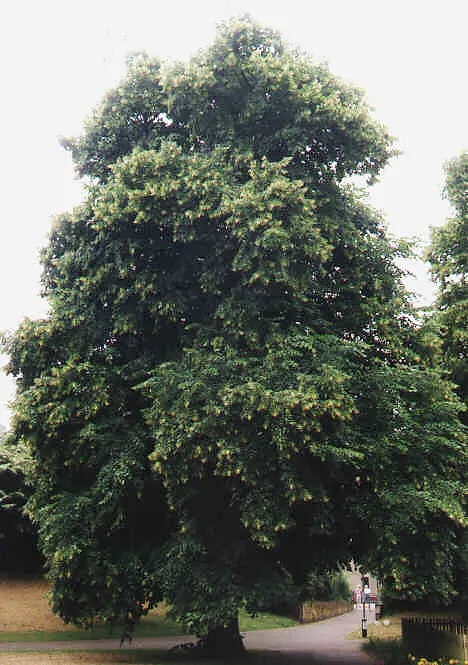
The broad-leafed lime Tilia platyphyllos has rounded dark-green leaves and yellowish flowers/fruits in mid-summer. (70’ 21.3m)
Claret Ash
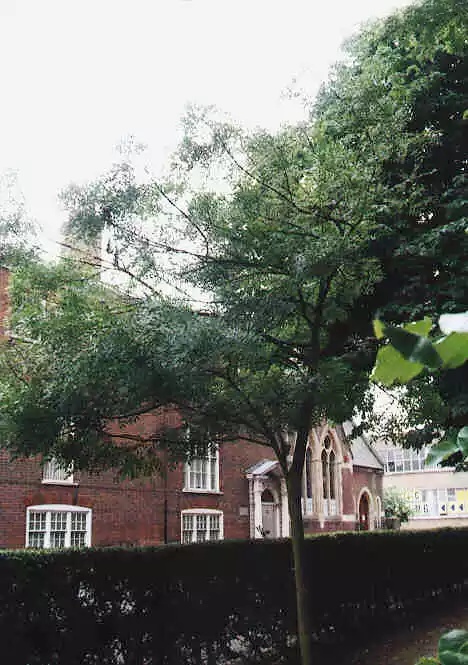
This Claret Ash, Fraxinus oxycarpa is a young specimen planted in a poor position and unlikely to attain its elegant potential. (22’ 6.7m)
Common Lime
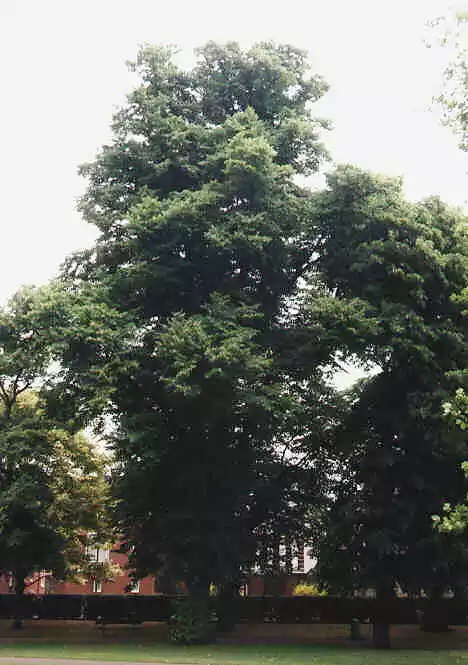
Common lime Tilia x europaea has rounded dark green leaves and smallish yellow flowers in summer, said to be toxic to bees. (95’ 29m)
Common Oak
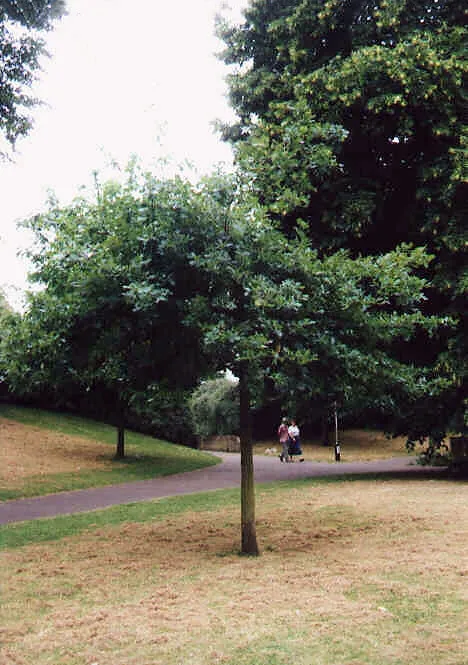
This young Common Oak, Quercus robur, was planted to celebrate International Women’s Week. (15’ 4.6m)
Drought Bed
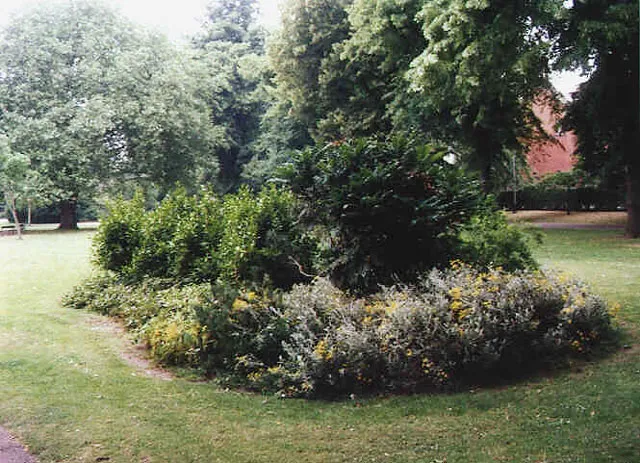
The drought bed contains species that need little or no watering, including Rubus tricolor, Cistus spp, Griselinia littoralis (NZ), Senecio laxifolius (NZ). A foretaste of climate change perhaps? This bed is sponsored by Anglian Water.
Foxglove Tree
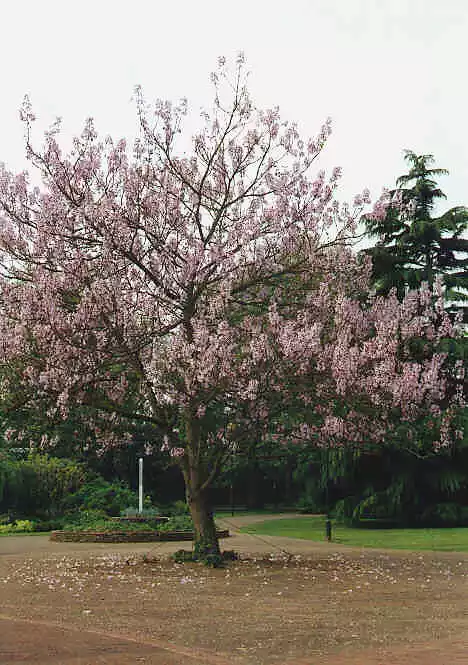
The Foxglove (also Princess) tree Paulownia tomentosa has large glossy leaves and abundant sprays of fragrant flowers in the spring. (32’ 9.8m)
Himalayan Cedar

The Deodar or Himalayan cedar Cedrus deodar has spirally arranged needles and barrel shaped glaucus cones. (50’ 15.2m)
Horse Chestnut
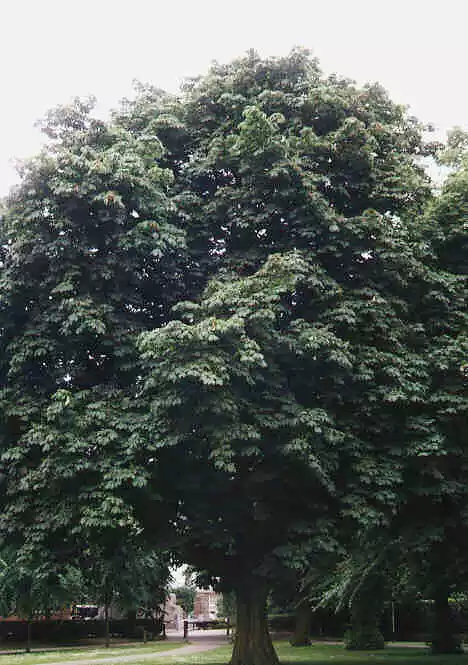
This common horse chestnut Aesculus hippocastanum is a vigorous specimen. (68’ 20.7m)
Huntingdon Elm
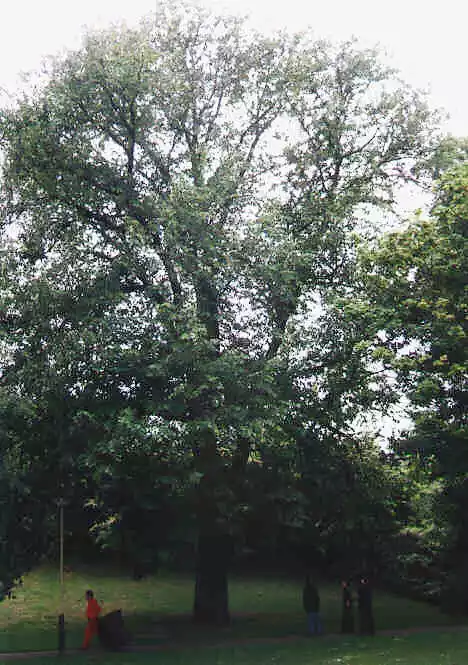
This fine mature Huntingdon elm, Ulmus x vegeta, may be one of the survivors of Churchman’s original plantings. It receives regular injections against Dutch Elm disease: the injection holes can be seen round the base of the trunk. (90’ 27.4m)
Indian Bean Tree
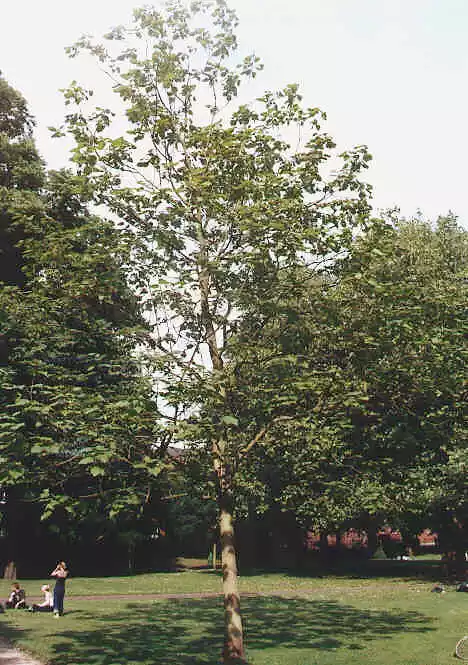
Indian bean tree, Catalpa bignonioides, has broad leaves, purple when young, and white flowers in summer followed by long pendant cylindrical pods. (30’ 9.1m)
London Plane
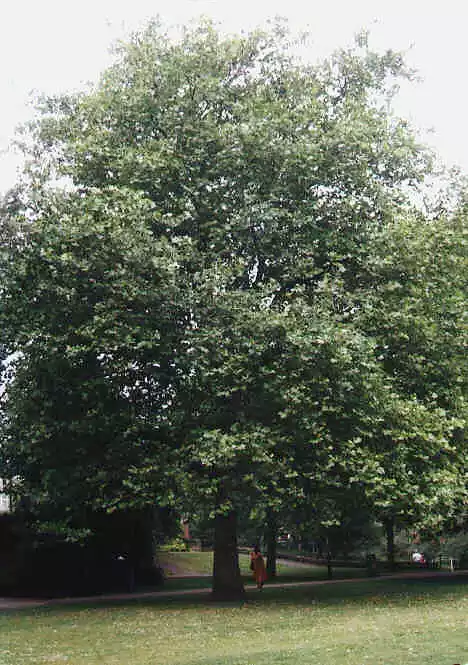
The London plane Platanus x acerifolia has characteristic flaky bark and sharply lobed leaves, with spherical fruit clusters in autumn. (80’ 24.3m).
North Walk
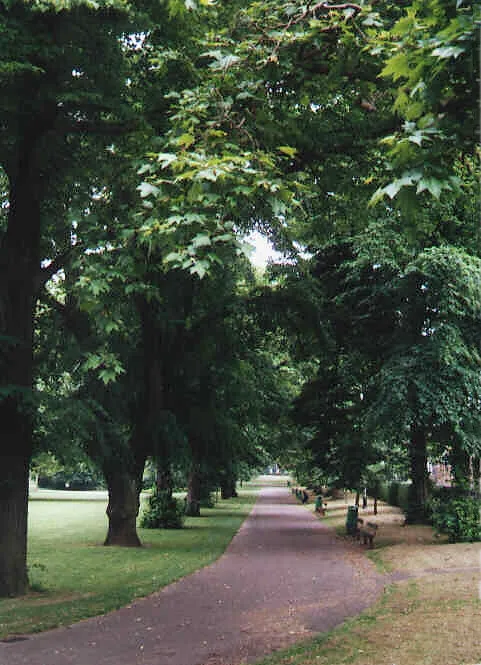
The North Walk, which runs parallel to Chapel Field North, shows one of the avenue of mature planes, limes and maples which follows the 18th century layout of elms planted by Sir Thomas Churchman.
Oriental Plane
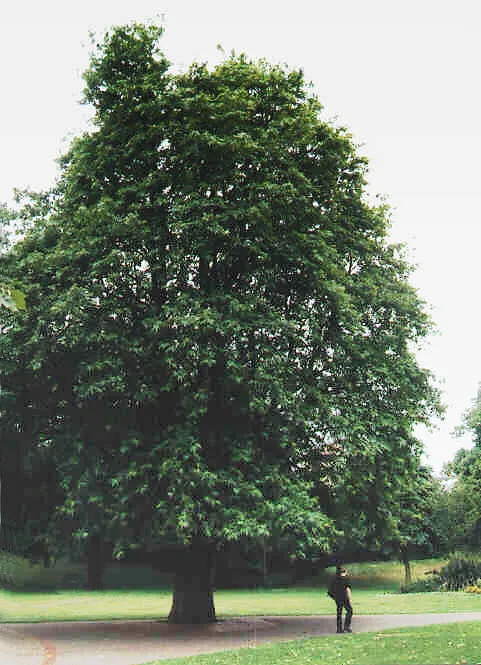
Platanus orientalis, the Oriental plane with large, glossy palmate, 5-lobed leaves (65’, 19.8m)
Pendant Silver Lime
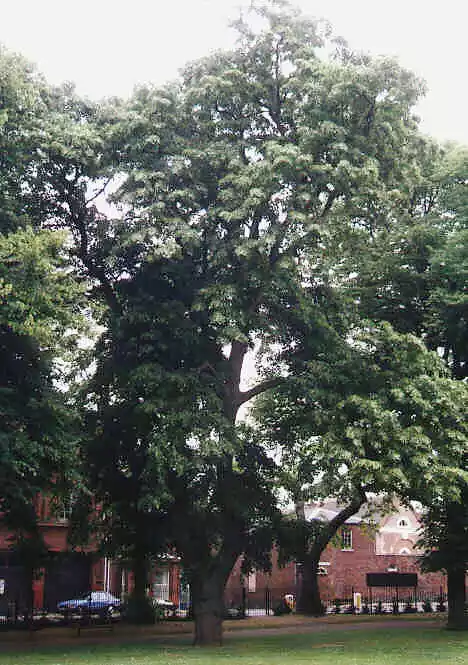
The Pendant Silver lime Tilia petiolaris has pointed, heart-shaped leaves which are silver on the underside, so it appears to shimmer in the breeze. Fragrant cream flowers in late summer. (88’ 26.8m)
Pin Oak
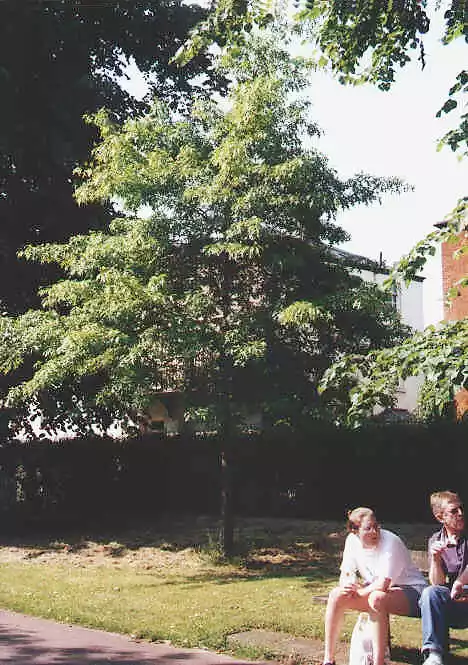
A young Pin Oak, Quercus palustris. Deeply-lobed leaves turn red-brown in autumn and persist over the winter. (25’ 7.6m)
South Walk
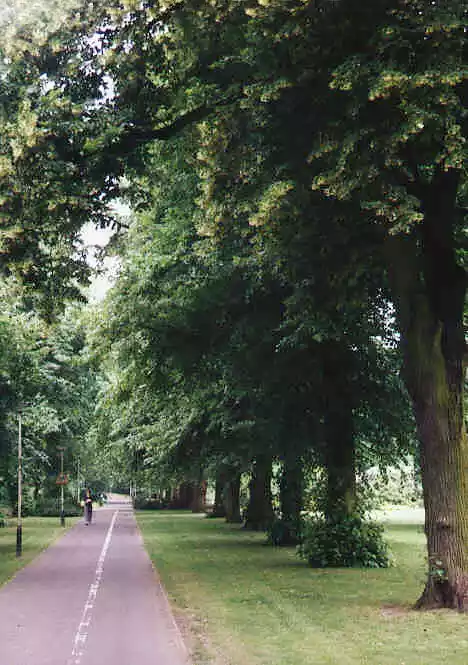
The South Walk is an avenue of mature limes and planes with specimen trees including Japanese Pagoda Tree, Tree of Heaven, Mongolian Lime and False Acacia.
